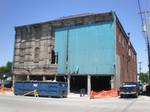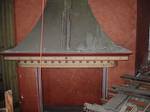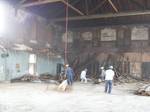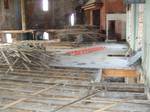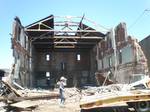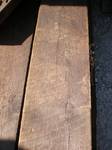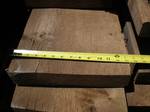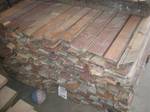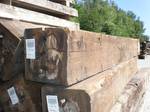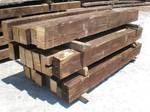Trestlewood Acquires Materials from 1880's Structure
In 1885, J.C. Brown and Company constructed a state of the art three story structure in downtown Lebanon, Indiana. The structure served as a roller skating rink for a short time as the owners made plans to finalize the building for its intended use: The Brown's Grand Opera House and Theater.
The Grand Opera House was as regal as its name implies, and the venue welcomed hundreds of the most popular entertainment events of its time, including operas, plays, musicals and boxing matches. The building also hosted county political conventions and speeches by famous people (including a visit by Admiral George Dewey after his famous victory in the Phillipines during the Spanish-American War).
After years of use as a theater, the building was used by different businesses in Lebanon and finally was left empty as the costs to maintain the facility made it un-economical as a business building.
When the demolition contractors were planning the building's demolition, they knew that it would be a shame to simply throw away all of the old-growth wood which was used to construct the theater, so they contacted Cannon Salvage, which specializes in the careful deconstruction of wood structures.
| The Boone County Historical Society helped us locate an old photograph of the opulent interior of the Grand Opera House and Theater. In its day, the theater seated about 1000 people and was complete with what was claimed to be the largest stage in the state, an orchestra pit under the stage, gas lighting and other modern amenities. |
| These photos show the exterior of the Opera House during deconstruction. The job was challenging because space was extremely limited. The Opera House is located at 216 W. Main Street (click on the address link to see an aerial photo - the Opera House is the building to the left of the star which has the roof that slopes up to a flat center) and is surrounded by buildings and an active bank drive-through. |
| Even just days before demolition began, the Opera House was filled with reminders of its glorious past, including the accessories of the old theater and exciting theater posters. |
| Cannon Salvage began by dismantling the balcony... |
| ...and then proceeded to dismantle the main floor of the building... |
| ...after the interior was completely stripped, Cannon Salvage removed the roof and the trusses and the demolition company carefully took the brick walls to the ground. |
| The Opera House yielded approximately 60,000 bf of fine old-growth materials, all of which were purchased by Trestlewood from Cannon Salvage. These pine joists came from the main floor of the Opera House and have a wonderful roughsawn brown patina. |
| The ground floor of the Opera House was supported by fabulous 2.5" x 14" Oak joists. These joists are the perfect thickness from which to cut two pieces of wide, rustic oak flooring. The circlesawn texture and rich brown color make this batch of material a perfect find for Trestlewood. |
| The stage and main level of the Opera House had maple flooring which was carefully removed by Cannon Salvage personnel to preserve the Tongues and Grooves so that the rustic old flooring can be re-used in your project. |
| The main structure was supported by huge oak beams... |
| ...and wonderfully weathered pine timbers. |
Please contact your Trestlewood representative if you would like to preserve some of the material from the Brown's Grand Opera House and Theater in your project.


